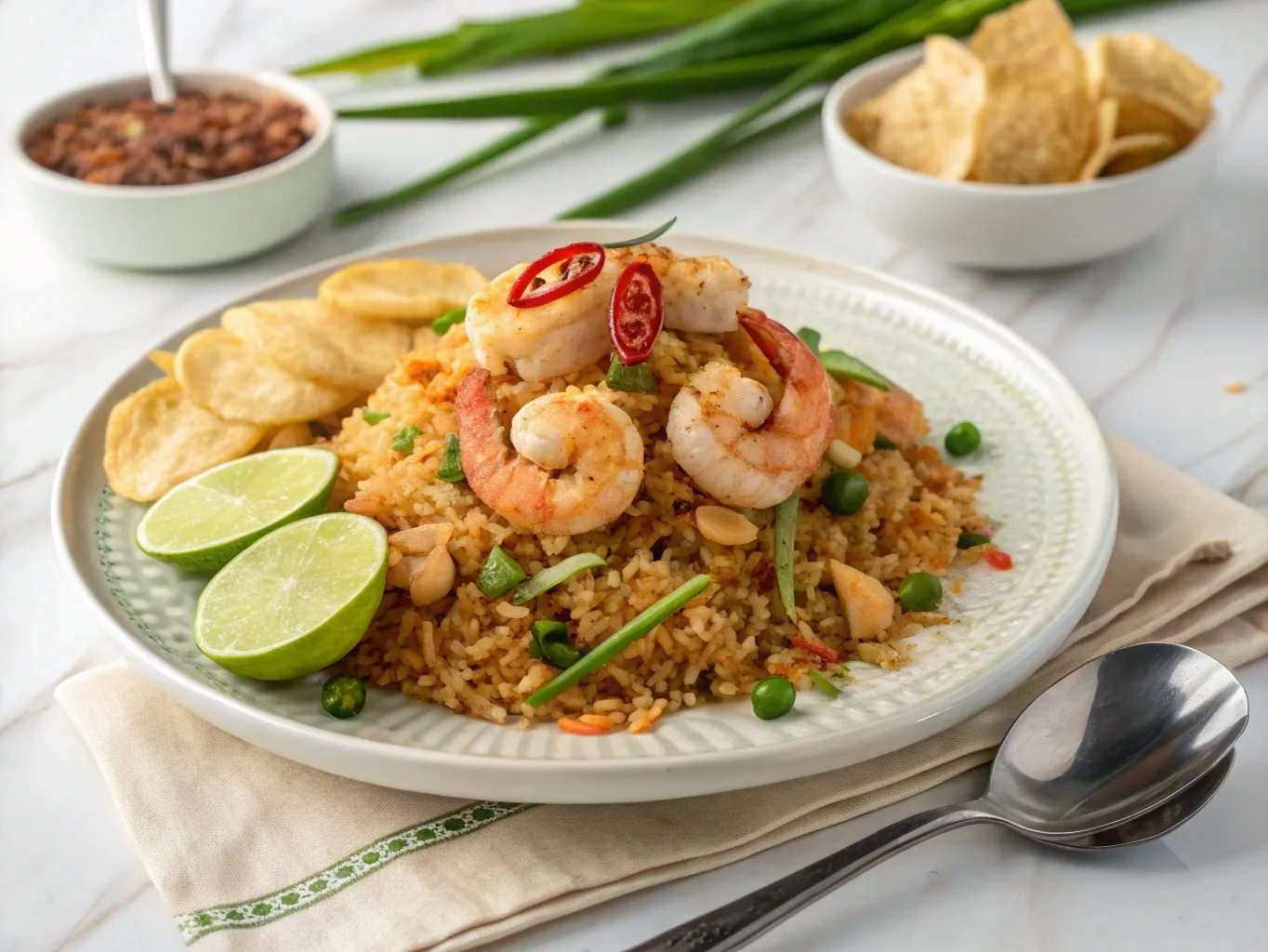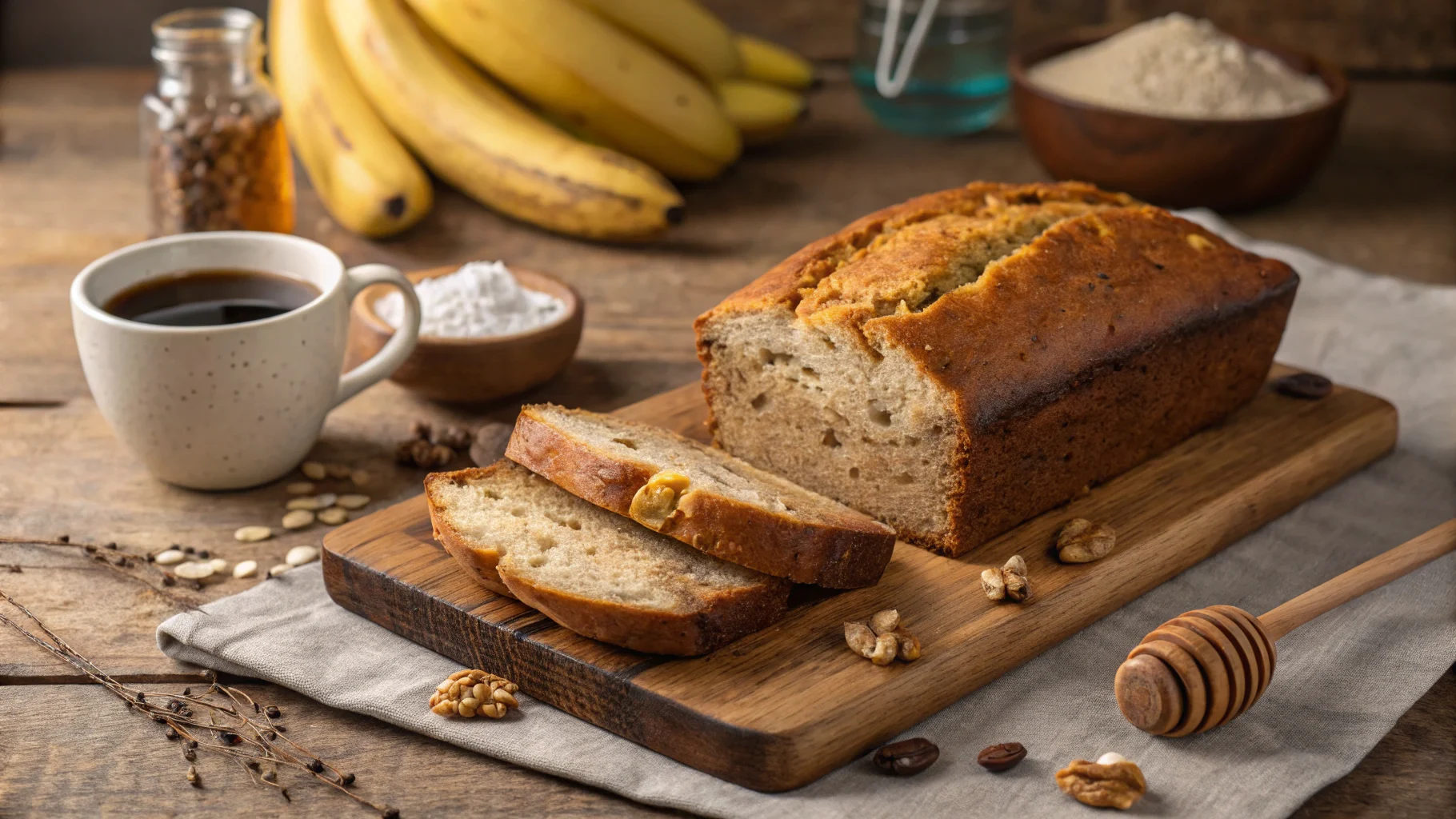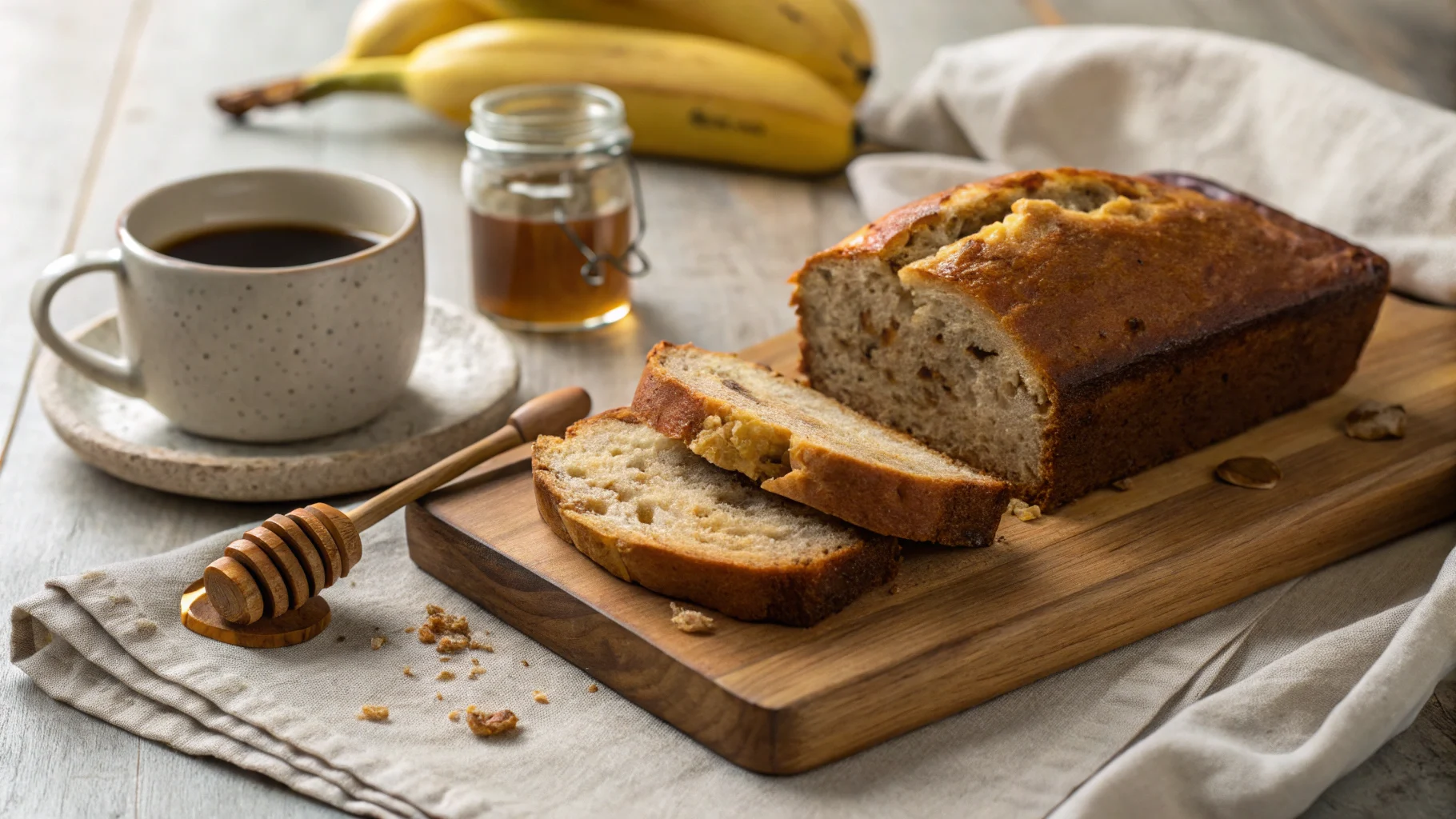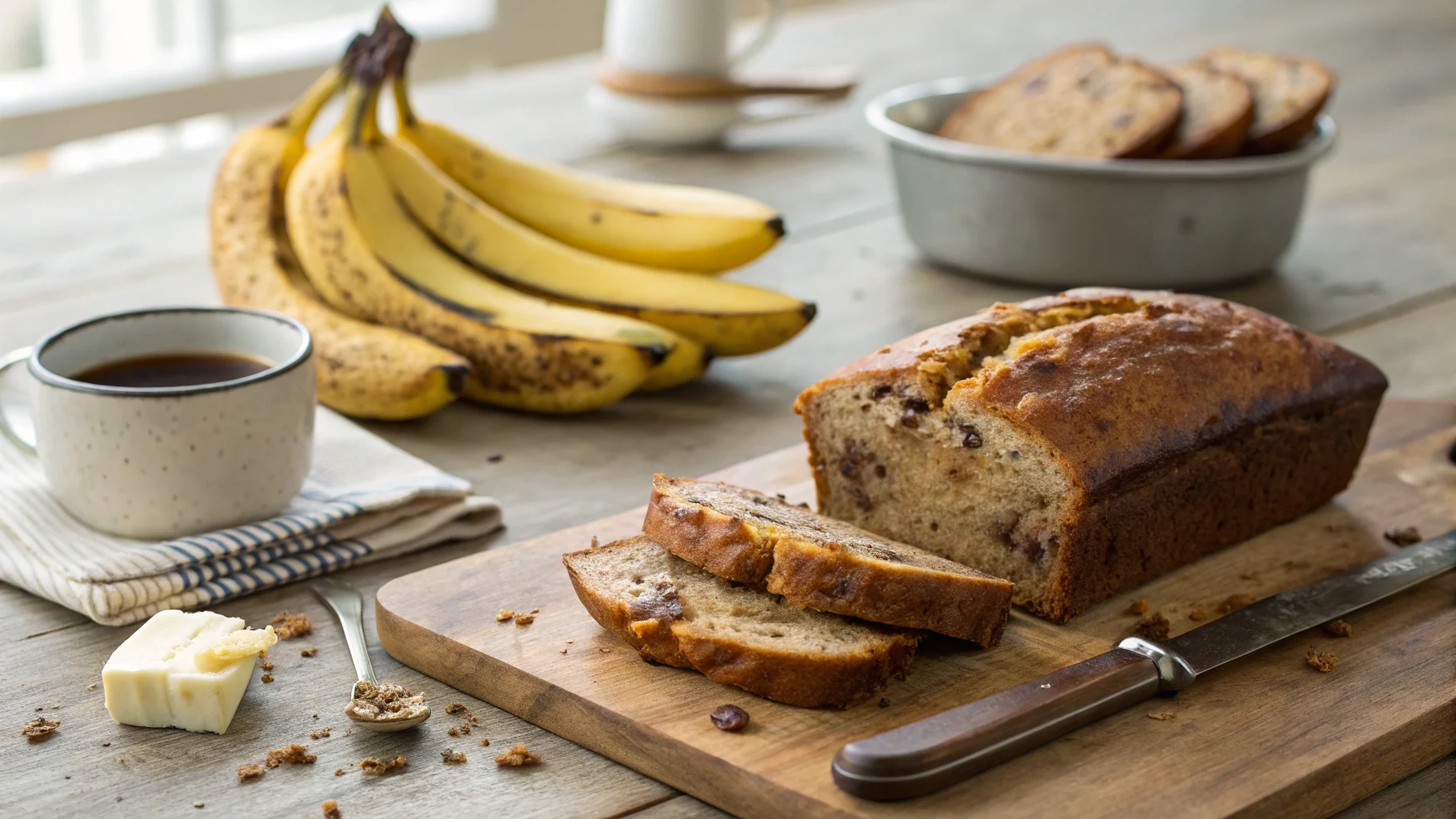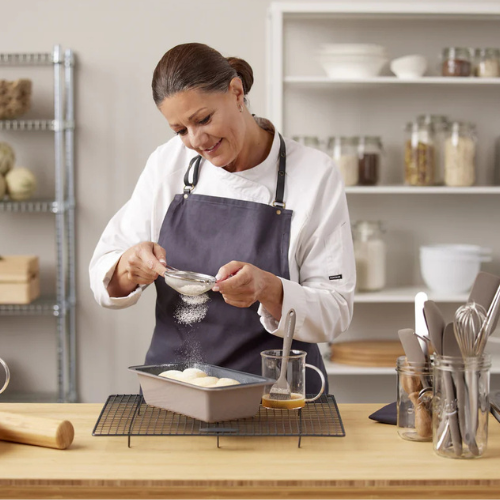Introduction
If you haven’t tried Burmese garlic fried rice yet, you’re in for a treat. This aromatic and savory dish holds a special place in Burmese cuisine, offering a perfect blend of simplicity and bold flavors. Known for its fragrant garlic, savory sauces, and fluffy texture, it’s a comforting meal that’s both versatile and satisfying.
Burmese garlic fried rice is not just food—it’s a slice of Myanmar’s rich culinary heritage. You’ll often find it served as a standalone dish or alongside curries, soups, or fresh salads. What sets it apart from other types of fried rice is its unique use of garlic, which is cooked until golden and crispy, giving the dish its signature aroma and crunch.
Let’s dive into the origins, ingredients, and techniques that make this dish such a beloved part of Myanmar’s food culture.
Discovering Burmese Garlic Fried Rice
Burmese garlic fried rice is more than just a simple dish—it’s an expression of flavor, culture, and tradition. In Myanmar, rice isn’t merely a side dish. It’s the centerpiece of almost every meal, and fried rice variations hold a cherished spot at family tables and street-side stalls alike.
This particular variation, with its golden garlic aroma and perfectly seasoned grains, is a favorite across the country. Whether enjoyed as a light lunch or a quick dinner, Burmese garlic fried rice embodies the simplicity and boldness that Burmese cuisine is famous for. What makes it even better is how adaptable it is. From vegetarians to seafood lovers, everyone can put their own spin on this classic recipe.
In short, Burmese garlic fried rice is not just a dish—it’s a flavorful reminder of Myanmar’s culinary traditions and communal dining culture.
The Allure of Burmese Fried Rice
What draws so many people to Burmese garlic fried rice is its unforgettable combination of flavors and textures. The crunch of golden-fried garlic, the soft yet slightly chewy rice, and the umami-packed seasonings create a harmony that’s hard to resist.
- Key highlights of Burmese garlic fried rice:
- Aromatic garlic infused into every grain of rice
- Balanced seasoning with soy sauce, fish sauce, or shrimp paste
- Perfectly fried rice with a golden, slightly crispy texture
This dish also reflects the creativity of Burmese home cooks. Depending on personal tastes or what’s available in the kitchen, people might add dried shrimp, crispy shallots, or a squeeze of lime. These small variations keep the dish exciting while still honoring its roots.
Burmese fried rice isn’t just a meal—it’s an experience. The moment that rich aroma hits your nose, you’re instantly transported to a bustling Burmese kitchen or a street market filled with sizzling woks.
Origins and Cultural Significance
A Brief History of Burmese Fried Rice
The Evolution of Fried Rice in Southeast Asia
The origins of fried rice can be traced back to ancient China, where leftover rice was stir-fried with vegetables and proteins to avoid waste. From there, the concept of fried rice spread across Southeast Asia, with each region adapting it to local ingredients and preferences.
In Myanmar, fried rice took on a unique identity thanks to the use of local flavors like garlic, shrimp powder, and fish sauce. These ingredients give Burmese fried rice a distinctly bold and savory profile. Over time, the dish became a staple in Burmese households, loved for its simplicity and adaptability.
While Chinese and Thai fried rice are internationally famous, Burmese garlic fried rice stands out for its emphasis on the aromatic quality of garlic. This subtle difference makes it an unforgettable dish for anyone who tries it.
Burmese Fried Rice in Daily Life
In Myanmar, rice is more than just a food staple—it’s a cultural icon. Burmese garlic fried rice plays an important role in this culinary tradition, often appearing at meals as a quick fix for leftover rice.
This dish is especially popular for its versatility. It’s equally suitable for a casual family meal or as part of a festive spread. Paired with sides like pickled vegetables or fried fish, it becomes a meal that satisfies both the stomach and the soul.
For many Burmese families, the process of making fried rice is a communal activity. Cooking together and sharing the finished dish fosters a sense of connection that’s deeply ingrained in Myanmar’s culture.
Essential Ingredients and Preparation
Key Ingredients for Authentic Burmese Garlic Fried Rice
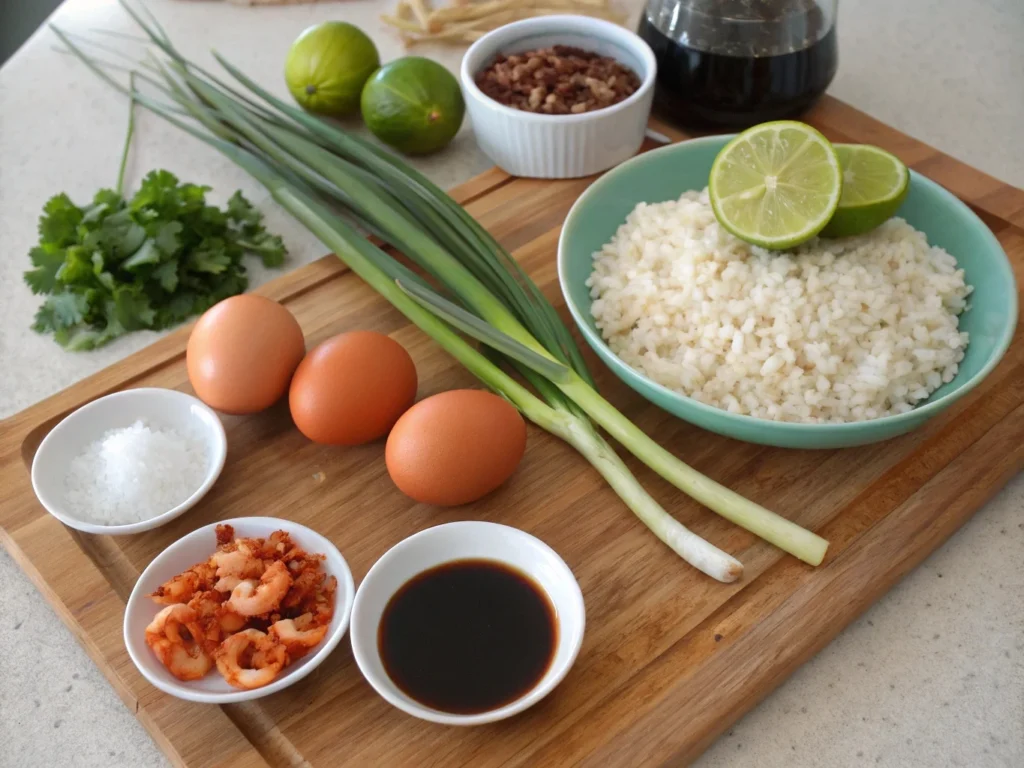
Rice Selection
The type of rice you use for Burmese garlic fried rice can make or break the dish. Traditionally, Burmese cooks use fragrant short-grain rice that’s slightly sticky, which allows the grains to absorb the seasonings without falling apart.
- Tips for choosing the right rice:
- Use day-old rice for the best texture—it’s drier and less likely to clump.
- Short-grain or medium-grain rice varieties work best.
- Avoid freshly cooked rice, as it may turn mushy during frying.
Using the right rice ensures that each grain is perfectly seasoned and slightly chewy, giving the dish its characteristic texture.
Aromatics and Flavorings
The star of Burmese garlic fried rice is, of course, the garlic. Thinly sliced garlic is fried until golden brown, creating a crispy topping that adds both texture and aroma. The garlic-infused oil is then used to fry the rice, ensuring that every bite carries the dish’s signature flavor.
- Essential aromatics and flavorings:
- Thinly sliced garlic
- Onions, for added sweetness
- Dark soy sauce or fish sauce for depth and umami
- Optional chili flakes for a touch of heat
These simple ingredients, when combined, create a dish that’s both flavorful and comforting.
Proteins and Add-ins
While the basic version of Burmese garlic fried rice is vegetarian, many variations include proteins or additional flavor boosters.
- Popular add-ins:
- Boiled peas or green beans for a pop of color
- Dried shrimp or shrimp powder for a seafood twist
- Eggs, scrambled directly in the wok for extra richness
Adding proteins and vegetables not only enhances the flavor but also makes the dish more nutritious and filling.
Step-by-Step Preparation for Burmese Garlic Fried Rice
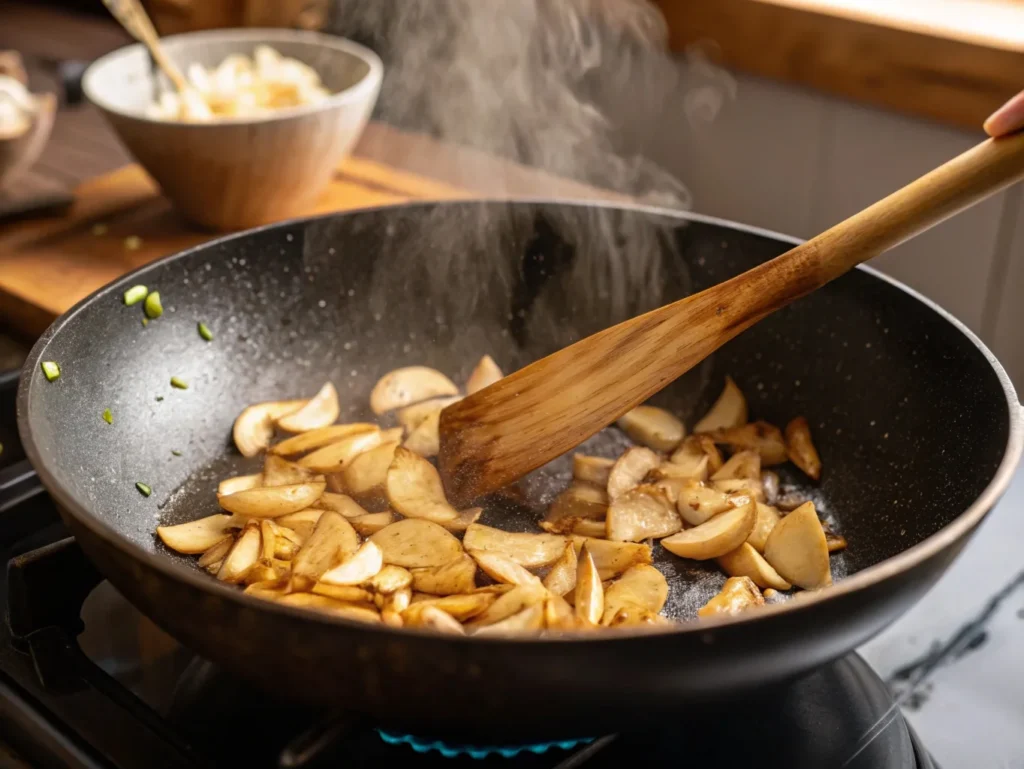
Cooking Burmese garlic fried rice isn’t complicated, but a few tricks can help you achieve restaurant-quality results at home. It’s all about timing, high heat, and using the right techniques to layer the flavors.
- flavor—learn how with our chicken fried rice on Blackstone guide.”
Preparing the Rice
The foundation of great fried rice lies in how you prepare the rice. Ideally, use leftover rice that’s been refrigerated overnight. This step allows the grains to firm up, making them less sticky and easier to fry.
- Day-Old Rice: Spread cooked rice on a baking sheet to cool and dry if you’re short on time.
- Avoid Fresh Rice: Freshly cooked rice contains too much moisture, leading to a mushy texture.
- Fluff the Rice: Break up any clumps with your hands or a fork before cooking.
If you don’t have short-grain rice, medium-grain works fine, but avoid long-grain varieties as they don’t hold seasoning as well. The key is to start with rice that’s dry and separated for optimal results.
Cooking Techniques
Once your ingredients are prepped, it’s time to fire up the wok. A high-heat cooking process ensures the rice develops a light, smoky aroma (sometimes called wok hei) that’s characteristic of fried rice.
- Fry the Garlic First: Heat oil in a wok and fry the sliced garlic until it’s golden brown. Be careful not to burn it, as burnt garlic turns bitter. Remove the garlic chips and save them for garnish.
- Infuse the Oil: Use the garlic-infused oil to fry the onions and any protein or vegetables you’re adding. This step layers the flavors.
- Add the Rice: Push the cooked ingredients to the side of the wok and add the rice. Use a spatula to stir-fry, breaking up any clumps as you go.
- Season Gradually: Add soy sauce or fish sauce sparingly at first. Taste and adjust seasoning as needed. A sprinkle of white pepper can add a slight kick.
Remember, high heat is your friend here. Stir constantly to prevent sticking, and aim for a slightly crispy texture on the edges of the rice grains.
Variations and Accompaniments
Burmese garlic fried rice is wonderfully versatile. Whether you prefer vegetarian dishes or a protein-packed meal, there’s a variation to suit your tastes.
“For a sweet and savory twist, check out our pineapple fried rice recipe, another delicious way to enjoy fried
Popular Variations of Burmese Fried Rice
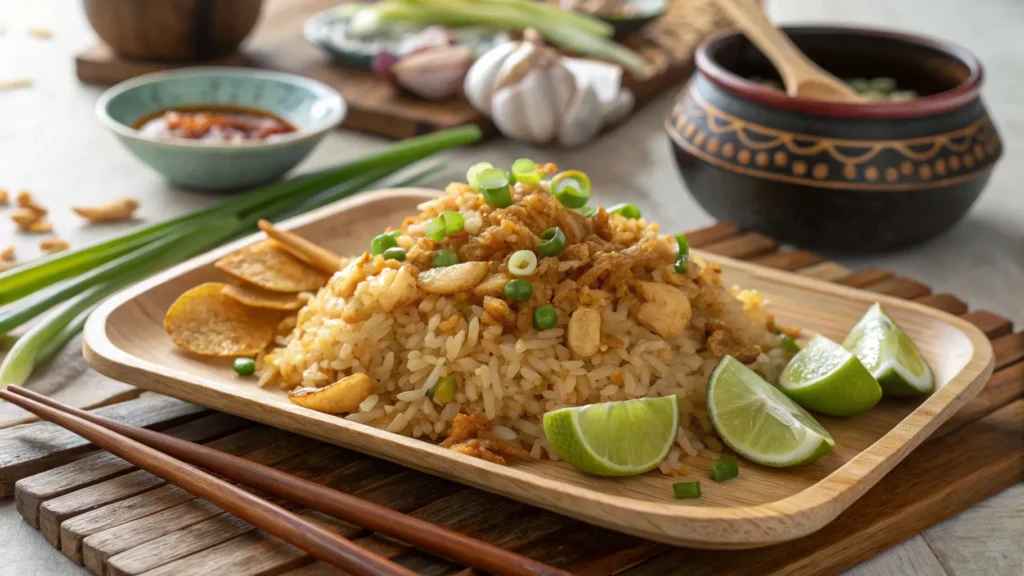
- Vegetarian Garlic Fried Rice
- For a meat-free version, skip the shrimp or fish sauce and use soy sauce instead. Add vegetables like carrots, green beans, or peas for color and crunch.
- Seafood Fried Rice
- Enhance your fried rice with dried shrimp, fresh prawns, or even crab meat. These ingredients pair beautifully with the garlic-forward flavor.
- Egg Fried Rice
- Push the rice to one side of the wok and crack an egg into the empty space. Scramble it lightly, then mix it into the rice for added richness.
- “If you’re a fan of spicy dishes, don’t miss our buldak fried rice recipe.”
Each variation retains the essence of Burmese garlic fried rice while allowing for personalization.
Traditional Side Dishes and Condiments
Pairing fried rice with sides and condiments can elevate the meal. In Burmese cuisine, these accompaniments add balance and variety to the dining experience.
- Ngapi Kyaw (Fried Fish Paste): This umami-rich condiment is a must-try for an authentic Burmese touch.
- Pickled Vegetables: Tangy and slightly sweet pickles cut through the richness of fried rice.
- Cucumber Salad: Fresh cucumbers tossed with lime juice, chili flakes, and a sprinkle of salt offer a refreshing contrast.
Adding these elements transforms your meal into a true feast, highlighting the diverse flavors of Myanmar.
Cooking Tips and Common Mistakes
Even the most experienced cooks can run into issues when making fried rice. Here are some expert tips to ensure your Burmese garlic fried rice turns out perfect every time.
Expert Tips for Perfect Fried Rice
- Use High Heat: A hot wok ensures the rice doesn’t steam and helps create a slightly crispy texture.
- Stir Constantly: Keep the ingredients moving to avoid burning or sticking.
- Layer Your Seasoning: Start with a little soy sauce or fish sauce, then taste and adjust gradually.
- Don’t Crowd the Pan: If you’re doubling the recipe, cook in batches to maintain high heat.
Common Mistakes to Avoid
- Using Fresh Rice: This is the most common mistake and leads to clumpy, soggy fried rice. Always use day-old rice.
- Overloading with Sauce: Too much soy sauce can make the rice overly salty and wet. Add in small amounts, tasting as you go.
- Burning the Garlic: Garlic cooks quickly, so watch it closely and remove it from the heat as soon as it turns golden.
By following these tips, you’ll master the art of making Burmese garlic fried rice that’s fragrant, flavorful, and perfectly textured.
Conclusion
Burmese garlic fried rice isn’t just a meal—it’s a window into Myanmar’s rich culinary traditions. From its aromatic garlic to its savory undertones, this dish showcases the simplicity and bold flavors that define Burmese cuisine.
Whether you enjoy it as a quick lunch, a dinner side dish, or part of a larger Burmese meal, this fried rice is guaranteed to satisfy. Plus, with so many ways to customize it, you can make it your own every time you cook it.
So, grab your wok and get frying. Let the aroma of garlic and soy sauce fill your kitchen, and share a taste of Myanmar with family and friends!
FAQ
1. What is the difference between Chinese fried rice and Burmese fried rice?
- Chinese fried rice often uses soy sauce and a variety of vegetables or proteins. In contrast, Burmese fried rice highlights garlic as the main flavor, with less reliance on sauce.
2. Why is day-old rice recommended for fried rice?
- Day-old rice is drier and firmer, making it easier to fry without becoming mushy or clumpy.
3. Can I make Burmese garlic fried rice vegan?
- Absolutely! Use soy sauce instead of fish sauce and skip any animal-based proteins like shrimp or egg.
4. What side dishes go well with Burmese fried rice?
- Popular sides include cucumber salad, fried fish paste (ngapi kyaw), and pickled vegetables.
5. How can I store leftover fried rice?
- Store fried rice in an airtight container in the refrigerator for up to 3 days. Reheat it in a hot wok or skillet to restore its texture.

